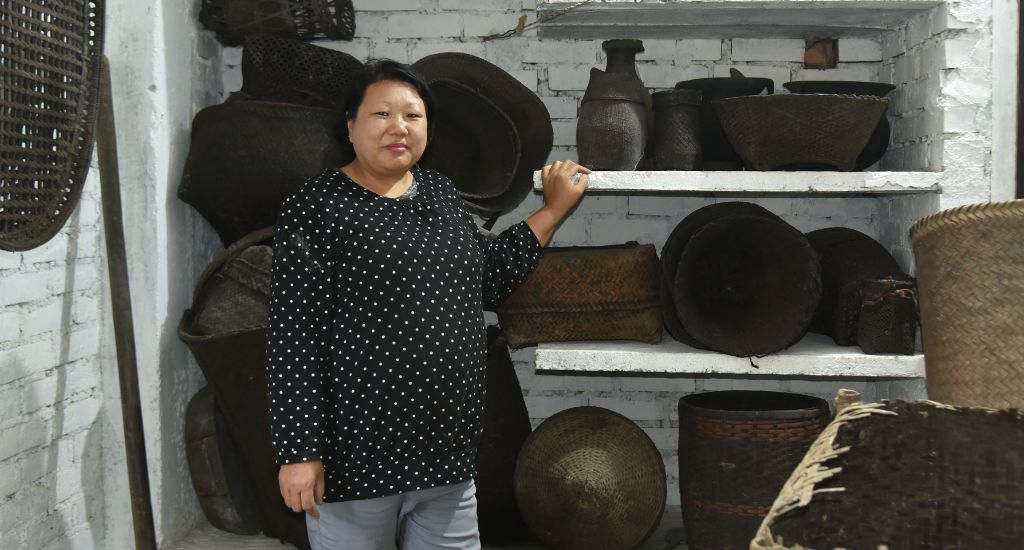Growing up, Vasai Zimik Ringkhanring, affectionately known as Akhan, didn’t pay much attention to the collection of old shawls and mekhalas — wraparound skirts worn by women — overflowing from the tin and wooden trunks of her home at Sirarakhong village in Manipur’s Ukhrul district, unaware of the value of those historical artefacts.
These family heirlooms, passed down through generations, held little significance to her and her siblings during their childhood. The crimson and red fabrics were merely carbolic-smelling bundles of old cloth for them. However, their skilled weaver mother revered the treasure trove.
“It wasn’t until we grew older that we started to appreciate our weaving tradition,” Akhan said, reflecting on her journey of rediscovery. Over 20 years ago, she decided to showcase the antique shawls and mekhalas to the public in Manipur. This decision marked the beginning of her mission to preserve her cultural heritage.
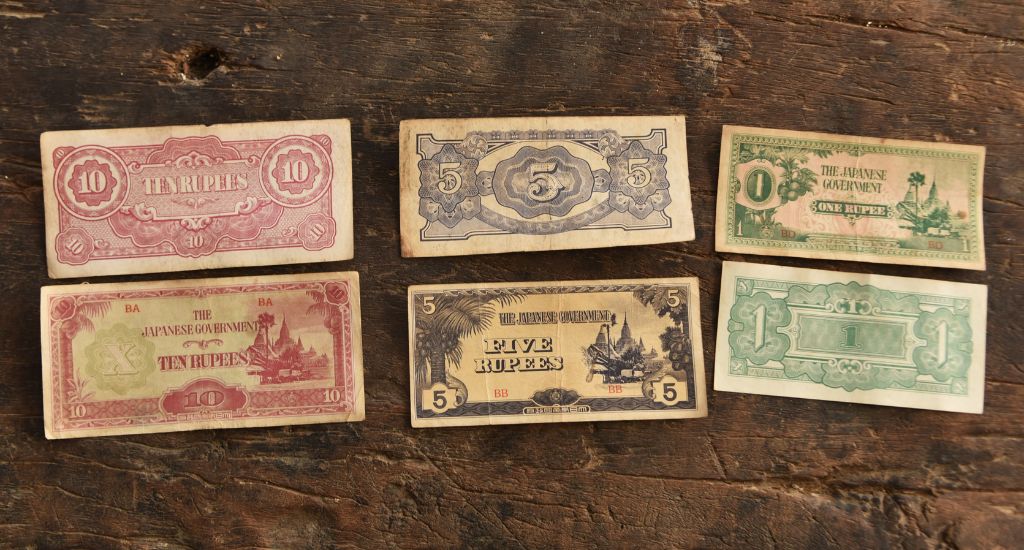
“Our village is known for hathei (special red chilli grown in Sirarakhong) and we have an annual festival dedicated to it. I first displayed the family collection that was over 100 years old during one such festival,” she said.
To her surprise, tourists flocked to see the collection, turning her stall into the festival’s main attraction. The curiosity and appreciation from visitors ignited a passion within Akhan, inspiring her to safeguard the traditions that defined her village and her people.
Cultural legacy
Encouraged by the response, Akhan began to expand her collection, acquiring additional shawls and mekhalas from friends and families who saw them as mere clutter in their cupboards. Crafted from local cotton yarns and dyed with indigenous colours extracted from locally available sources, each piece echoed the artisanal traditions of her village.
Also Read: The exuberant post-wedding bridal march of Tangkhul Nagas
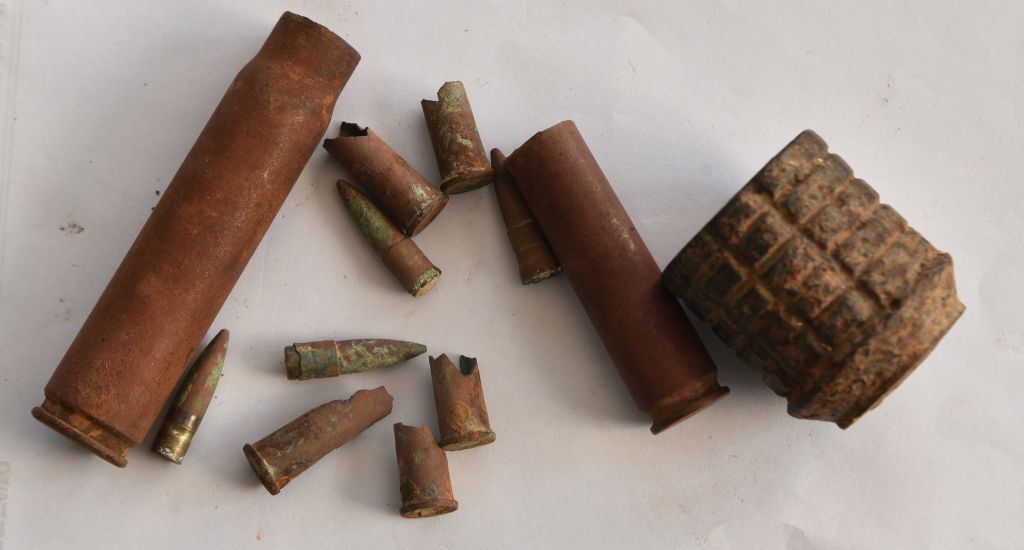
Akhan’s collection now comprises more than 50 shawls and mekhalas, ranging from 60 to over 100 years old. The condition varies among them, with some in pristine condition and others showing signs of discoloration and wear due to age and use.
As her collection grew, so did her fascination with antiquing. Akhan’s quest extended beyond textiles, encompassing antique tools, architectural remnants and wartime relics. Her villagers, recognising her passion, contributed to her endeavour, enriching her collection with diverse historical artefacts.
Among her prized possessions are old everyday iron tools, bamboo baskets and other products, a spinning wheel, giant wooden mortars, sleeping beds and items used by her ancestors.
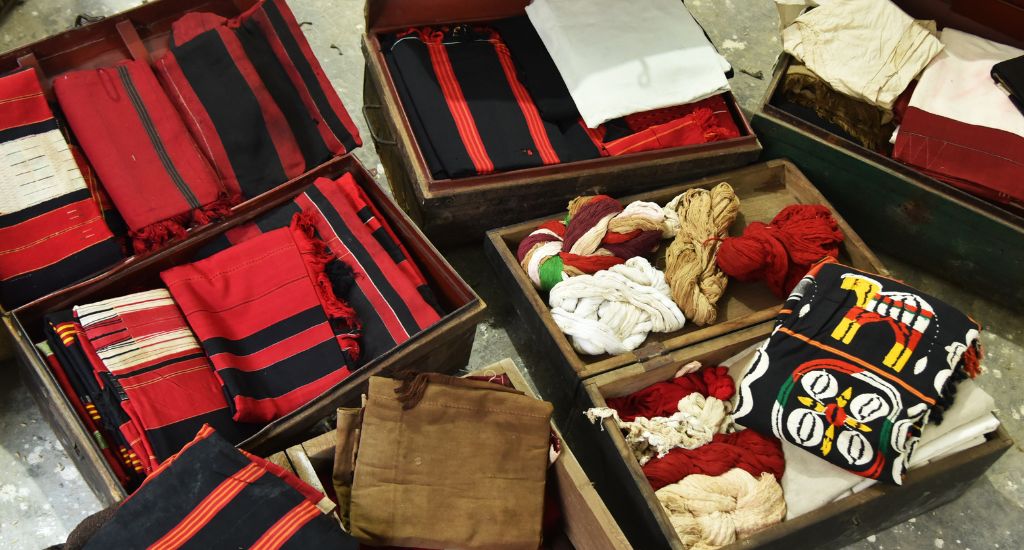
Echoes of World War II reverberate through time in Sirarakhong. Here, the passage of both Japanese and British Indian forces left behind profound traces of conflict and upheaval. Among the relics found in the village are helmets worn by soldiers, water cans, ammunition boxes, Japanese spades and hoes, and various other items.
Amidst these vestiges of strife, one finds Japanese invasion money, dubbed “Mickey Mouse money” — a currency used by the invading military for transactions with villagers.
Trove of history
With more than 1,000 historical artefacts amassed over two decades, Akhan dreams of establishing a museum to preserve her cultural legacy.
Also Read: A Manipur village dares to dream, one Kachai lemon at a time
“I hope the government or an organisation will be willing enough to help me build a museum either in my village or in Ukhrul town,” she said.
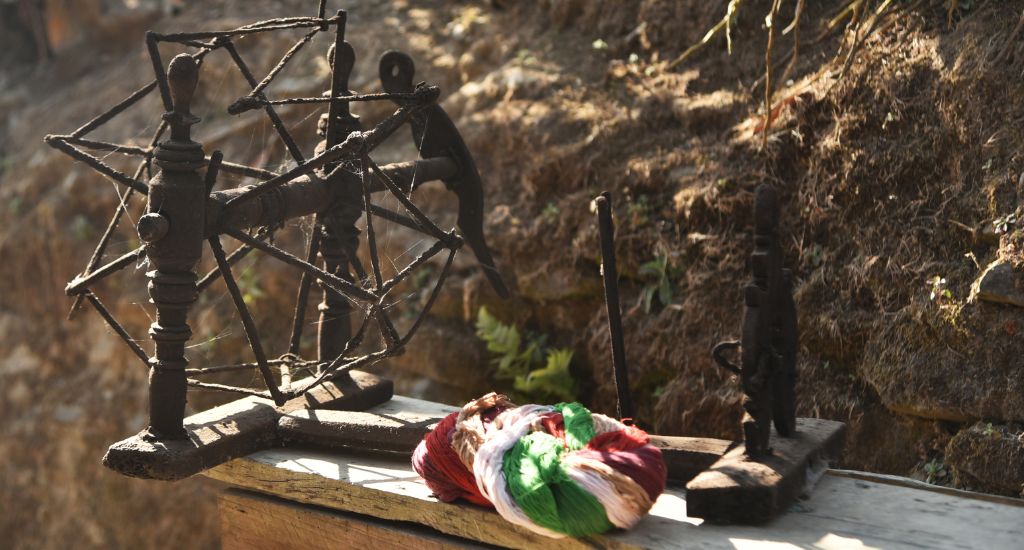
Most of the historical artefacts are kept in the storeroom of her home. However, she remains cautious, reluctant to part with her collection without proper context.
“The collection is a piece of our people’s history, who we were in the past and how we have reached where we are today,” Akhan said.
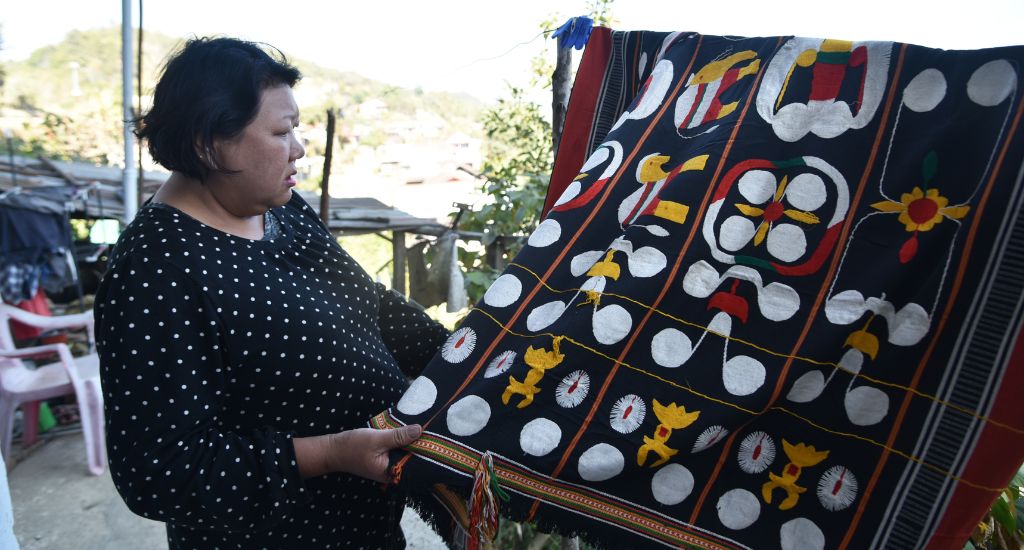
In a world grappling with disconnection from roots, Akhan’s determination to safeguard her heritage shines brightly.
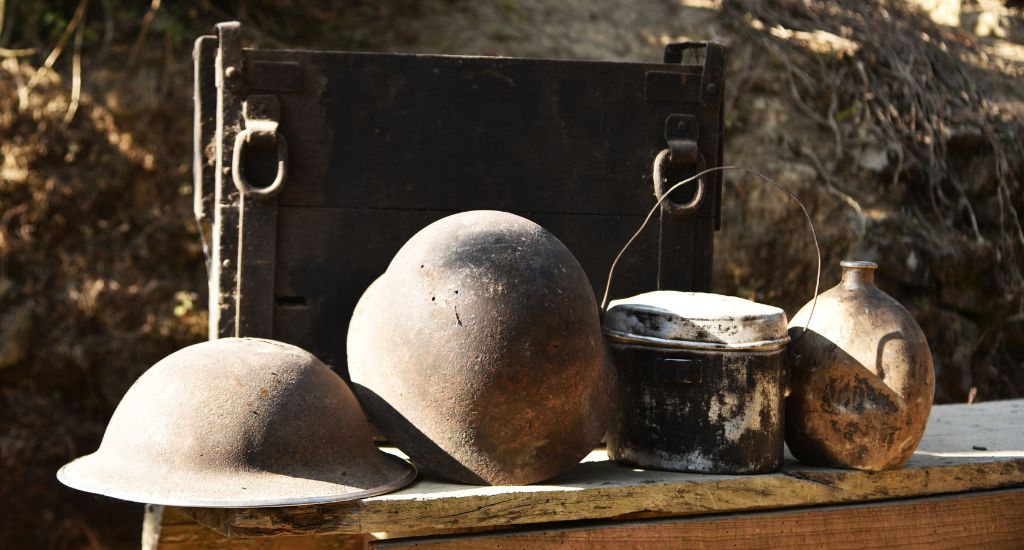
“What good would it serve to our people if these vestiges of our past are also taken away from us?” she wondered, justifying her decision to decline calls for donations. She remains hopeful that her collection of historical artefacts will find a permanent home in a museum, ensuring that Sirarakhong’s past will endure for generations to come.
Also Read: Manipur kindergarten kids learn to rock
The lead image at the top shows Vasai Zimik Ringkhanring with her collection of various traditional household items. (Photo by Worngachan A Shatsang)
Worngachan A Shatsang a freelance journalist based in Ukhrul, Manipur, and a Rural Media Fellow 2022 at Youth Hub, Village Square. He writes about football, rural life, farming and environmental issues.

